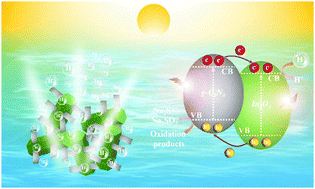MOF-derived hexagonal In2O3 microrods decorated with g-C3N4 ultrathin nanosheets for efficient photocatalytic hydrogen production†
Abstract
This study reported the establishment of a highly efficient In2O3@g-C3N4 heterostructure with intimate contact for photocatalyzed H2 evolution by incorporating g-C3N4 ultrathin nanosheets on the surface of MOF-derived hexagonal In2O3 microrods. As a result, the In2O3@g-C3N4 composites possessing nanosheet–microrod composite structures exhibited remarkably improved photocatalytic performance in comparison to pure g-C3N4 and In2O3 photocatalysts for the evolution of hydrogen via the water-splitting process.



 Please wait while we load your content...
Please wait while we load your content...